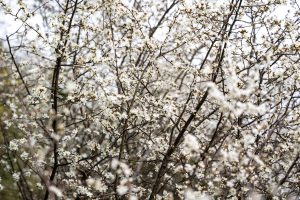A bright thought
Perhaps taken for granted and even misnamed, the most beautiful flower and herald of spring must surely be the primrose. The Latin name means 'first rose', despite the fact they are not a member of that family. As the county flower of Devon, it is no surprise that they grow prolifically on our farm. A valley that dips gently down to the estuary. Flourishing on banks and hillsides, the brightest and most beautiful blooms burst from the start of the new year through March and well beyond. Indeed, so prolific is their spread on the steepest slopes here we named one pasture 'Primrose Hill'. A glorious sight not only found fame as a location for a popular BBC gardening programme with Carol Klein, but also for some of my BBC wildlife documentaries.
Indeed, in the West Country so common are these floral stars of spring, we tend to forget how special they really are. Primroses produce two different flowers, the so called 'pin-eyed' and the 'thrum-eyed'. An ingenious adaptation to ensure cross pollination. Early in the year the variety of blooms is limited, so insects have little choice. Only those with a long proboscis like butterflies and moths, or bee flies, can reach the nectar they seek and so fertilise the flowers.
For me the subtle variation of colour from pale to dark creamy yellow is one of the true glories at the start of warmer weather. But that spectacle is under threat. Not just by hedgerow destruction but from the abundance of similar garden plants. The resulting hybrids are a motley collection of pinks and purples, rather than a carpet of cream. Hopefully the sheer number of our native primroses can swamp the invaders. The bright colour of our native primrose in shaded or dim light is also vital for the survival of many insects. They in turn feed some of our garden birds.
One of the most popular places to see primroses is on hedge banks. Because Devon is the hedgerow capital of Britain with over 33,000 miles crisscrossing our rolling hills, whether closely clipped or big and bushy, our native wild primrose will hopefully still find plenty of places to thrive.
© Andrew Cooper



